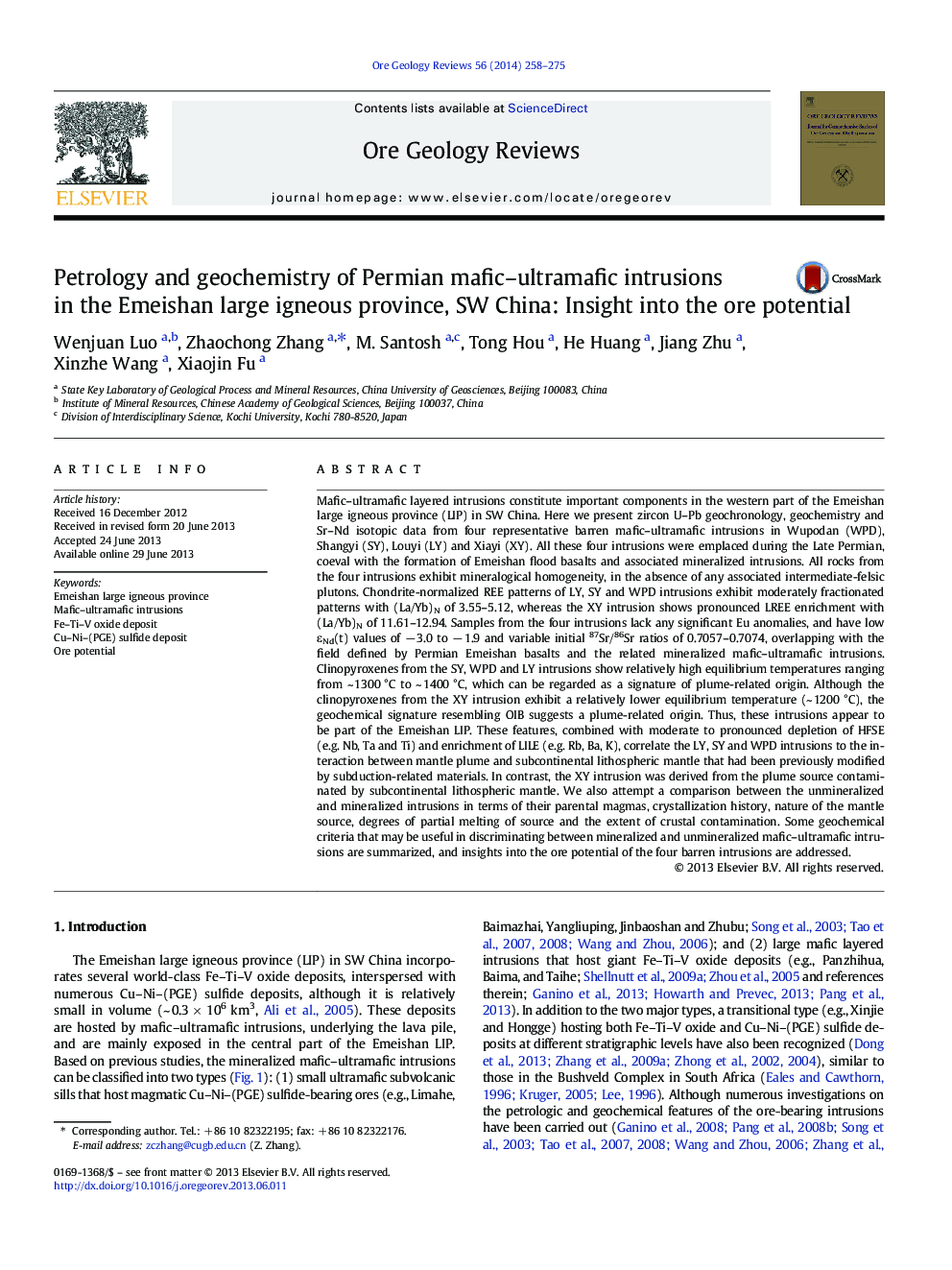| کد مقاله | کد نشریه | سال انتشار | مقاله انگلیسی | نسخه تمام متن |
|---|---|---|---|---|
| 4697433 | 1637247 | 2014 | 18 صفحه PDF | دانلود رایگان |
• The geochemistry is compatible with a plume–lithosphere interaction.
• Comparisons between the barren and mineralized mafic–ultramafic intrusions are stated.
• Ore potential of the mafic–ultramafic intrusions is appraised.
Mafic–ultramafic layered intrusions constitute important components in the western part of the Emeishan large igneous province (LIP) in SW China. Here we present zircon U–Pb geochronology, geochemistry and Sr–Nd isotopic data from four representative barren mafic–ultramafic intrusions in Wupodan (WPD), Shangyi (SY), Louyi (LY) and Xiayi (XY). All these four intrusions were emplaced during the Late Permian, coeval with the formation of Emeishan flood basalts and associated mineralized intrusions. All rocks from the four intrusions exhibit mineralogical homogeneity, in the absence of any associated intermediate-felsic plutons. Chondrite-normalized REE patterns of LY, SY and WPD intrusions exhibit moderately fractionated patterns with (La/Yb)N of 3.55–5.12, whereas the XY intrusion shows pronounced LREE enrichment with (La/Yb)N of 11.61–12.94. Samples from the four intrusions lack any significant Eu anomalies, and have low εNd(t) values of − 3.0 to − 1.9 and variable initial 87Sr/86Sr ratios of 0.7057–0.7074, overlapping with the field defined by Permian Emeishan basalts and the related mineralized mafic–ultramafic intrusions. Clinopyroxenes from the SY, WPD and LY intrusions show relatively high equilibrium temperatures ranging from ~ 1300 °C to ~ 1400 °C, which can be regarded as a signature of plume-related origin. Although the clinopyroxenes from the XY intrusion exhibit a relatively lower equilibrium temperature (~ 1200 °C), the geochemical signature resembling OIB suggests a plume-related origin. Thus, these intrusions appear to be part of the Emeishan LIP. These features, combined with moderate to pronounced depletion of HFSE (e.g. Nb, Ta and Ti) and enrichment of LILE (e.g. Rb, Ba, K), correlate the LY, SY and WPD intrusions to the interaction between mantle plume and subcontinental lithospheric mantle that had been previously modified by subduction-related materials. In contrast, the XY intrusion was derived from the plume source contaminated by subcontinental lithospheric mantle. We also attempt a comparison between the unmineralized and mineralized intrusions in terms of their parental magmas, crystallization history, nature of the mantle source, degrees of partial melting of source and the extent of crustal contamination. Some geochemical criteria that may be useful in discriminating between mineralized and unmineralized mafic–ultramafic intrusions are summarized, and insights into the ore potential of the four barren intrusions are addressed.
Journal: Ore Geology Reviews - Volume 56, January 2014, Pages 258–275
